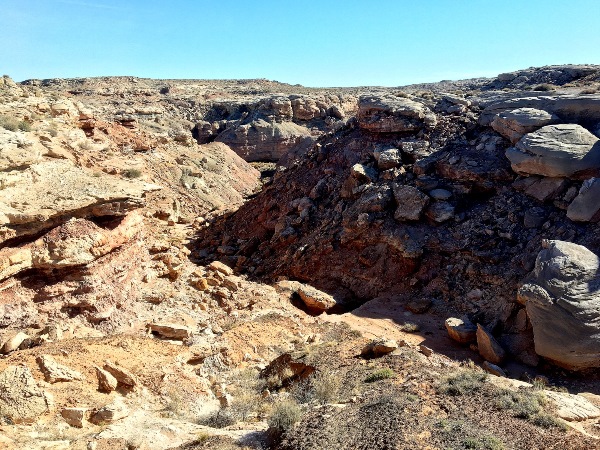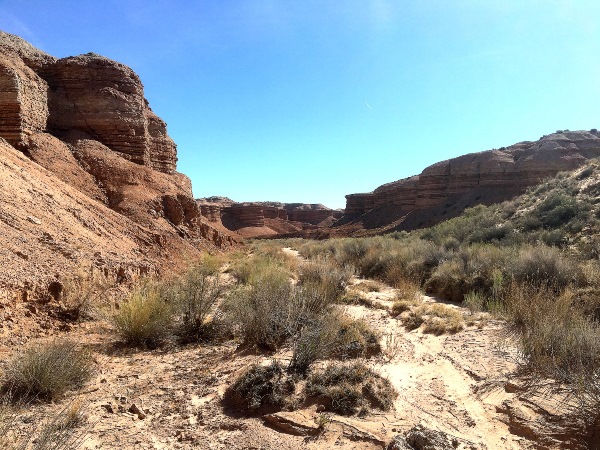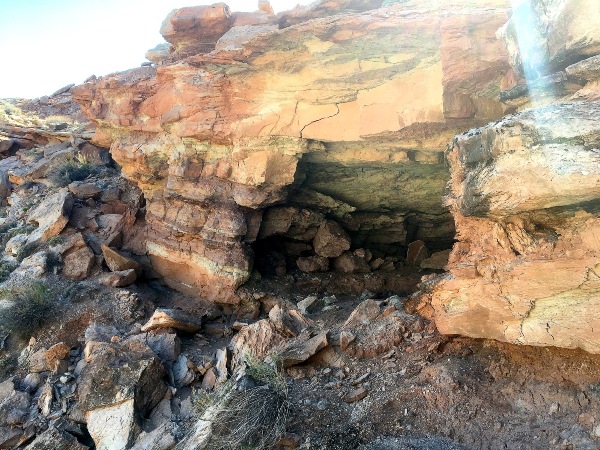Sol 5/March 30th, 2017
Crew Commander Report by Otsmar Villarroel, Crew 177 Commander
Although today was not as beautiful as previous days with a beautiful blue sky and calm wind, it was a great day for the crew’s mission here on the red planet. After breakfast, a group consisting of Parker, Li, Espinoza, and Jingjit left the Hab to conduct some geology experiments.
The main goal of this EVA was to study the terrain from a geological point of view and thus collect some geology data of interest. The location for this EVA was chosen in order to study different kinds of geologic structures and the methods by which they were created. The pattern of lithification in the sedimentary rock field was unique and interesting to the crew.
Former evidence of a vigorous fluvial environment was observed at the second location. Determination of width and height were performed during the EVA. After collection of the data, the Geology EVA group returned to the Hab.
After enjoying lunch, at about 2:30 pm, Martian time, Crew members LaBarre and Espinoza, had the opportunity of testing her Emergency Medical Service Rover (EMRS) outside the Hab. The EMSR is a robot designed and programmed to retrieve an injured astronaut out on an EVA at Mars and bring him or her back to the Hab for medical assistance. During the test LaBarre and Espinoza detected some operational/mechanical issues. However, they plans correcting them and a new test, pending approval, will be performed tomorrow.
Engineer, Espinoza, completed their daily routine without anomalies to be reported. Greenhab officer, Ramirez, worked on taking care of plants as well as on his individual project, the bike generator. He is planning to collect final results tomorrow to be analyzed back in Waco, Texas. Our microbiologist, Jingjit, began and finished the gram stain process for the bacterial samples taken previously and attempted to use the microscope. Crew member, Li, spent part of the afternoon working on his clock.
After dinner, crew spent the crew spent a few hours helping coming up with a marketing plan to promote MDRS at our community college, McLennan Community College. Tomorrow, pending approval, an EVA is planned. The purpose of this EVA is the collection of soil samples surrounding the Mars Desert Research Station (MDRS) to bring back to McLennan Community College in Waco, Texas in order to find bacteria producing antibiotics to combat antibiotic resistance crisis.
Last night, our crew astronomer, Becky Parker, used the telescope, with the main goal of completing a two-star alignment as well as a four- star calibration procedure. Unfortunately, while she was able to have the telescope working properly, she could not get the telescope to focus as expected. We are planning to contact Mission Support looking for recommendations.







